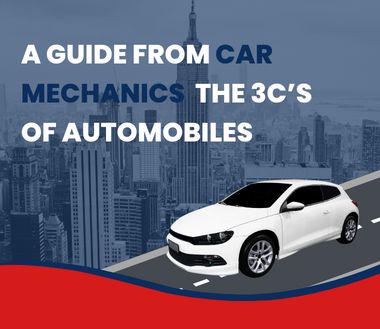- We'are Open: Mon - Fri 8:00 am - 5:30 pm
- Saturday: By Appointment
- Sunday: Closed
- 26 Industrial Park Drive, Lilydale, VIC 3140.
-

Call Us
-

Send us mail

Call Us

Send us mail

Have you ever contacted a mechanic for help only to be deluged with further inquiries? If so, what you went through was the beginning of a systematic mending procedure known as "The Three C's." Concern, Cause, and Correction are the three C's.
As explained by the car mechanics to all the car owners in Chirnside Park, the three C's are the pillars that cannot be changed or removed because they are all necessary. They form the backbone of the auto repair procedure and, if followed correctly, will guarantee that your car is fixed correctly the first time.
Concern
This is your worry as the customer, and resolving it will be of great assistance to the car mechanic.
Step 1: Observe The Concern
Your symptoms of concern are what is motivating the repair visit to the car mechanics. Any human sense, such as sight, hearing, smell, or touch, might notice the symptoms. On the other hand, the concern is neither what you believe the issue might be nor a specific repair you are planning.
For instance, your real concern would be the grinding sound if you heard it as you came to a stop and thought that the brake pads might be worn out. Sounds simple enough, no?
Step 2: Consider The Concern
It turns out that gathering a customer's symptoms is a terrific place to start but is by no means sufficient in a car mechanic's eyes. The background of the symptom must be revealed to properly comprehend how to duplicate the worry. The car mechanic is completely satisfied with the response to those queries!
Although not all of these inquiries will always be relevant yet it is still a good idea to be aware of them and share the relevant information when needed.
Cause
The car mechanic is in charge of identifying the root of your concern. The car mechanic will take into account all the details you've supplied during the "concern" step and then start working on pinpointing the problem at this point, which is when the proverbial rubber hits the road.
Step 3: Verify and Confirm The Concern
The initial step is to "verify the concern," which is considerably simpler to do with the right symptom context. Any repair advice will likely be an educated guess that may or may not fix the problem if the issue cannot be replicated.
Some issues come and go in annoying ways. Have you ever questioned why the issue never manifests itself at the appropriate time? The key is that occasionally these things occur without the car mechanic's negligence or a purported curse. Testing can begin once the problem has been recreated.
Step 4: Test The Concern
The tests that are run are mostly determined by the type of failure. For instance, a problem with a warning light often necessitates complex circuit testing by the Original Equipment Manufacturer's (OEM) particular procedure. However, a rattling noise issue is typically identified via a series of physical looseness examinations.
The most effective method to diagnose your specific problem will be chosen by an experienced automotive technician using knowledge, experience, and reference materials. It would also be negligent to skip over the "diagnostic machine" subject. Our culture has accepted the notion that a car mechanic's toolbox contains a device that can instantly identify the precise part that needs to be changed. To get it done, the device should be plugged into the vehicle.
OBD-II scanners have a wide range of capabilities, which often get better as the price goes up. The scanner's main function, whether it costs $50 or $5,000, is to retrieve Diagnostic Trouble Codes (DTCs).
DTCs can indicate a problem with a part, circuit, or system, but this is only the mechanic's starting point. Additionally, codes have no upper limit, therefore several codes may exist in a single or multiple systems. Since having more than ten codes at the moment of retrieval is fairly unusual, DTCs are more like observations than final judgements.
Correction
The car mechanic will suggest a course of action to address the problem after the root of your anxiety has been sufficiently isolated. Although it might also be an adjustment, recalibration, or software update yet this is frequently a physical repair. After the repair is finished, it's time for the last and, surprisingly, least-appreciated step: confirming the fix.
Step 5: Validate The Fixing and Repair
While not quite the same, "validating the repair" is similar to "verifying the concern" from our previous section. Verifying the repair involves making sure your problem doesn't come back and that no new problems have emerged. Failure to do so could lead to a brief return visit, sometimes known as a "comeback."
In the culture of vehicle maintenance, a return carries some stigma. Therefore, even while car mechanics want clients to keep coming back to work, they don't want it to be a result of a misdiagnosis or any other error on our part.
Having said that, not all comebacks are the consequence of poor workmanship; occasionally, the initial issue can cover up another pre-existing problem. Regardless, a thorough test drive should be performed after a repair to identify any potential problems. Expert car mechanics take pleasure in knowing that your issue has been addressed and that you are at least made aware of any potential issues that may need care in the future.
We sincerely hope that this article has given you a useful understanding of how the auto repair process operates. We firmly believe that the customer's role is crucial and that by being more knowledgeable about the procedures involved, you may assist the car mechanic in returning the vehicle to its ideal working state more quickly.

